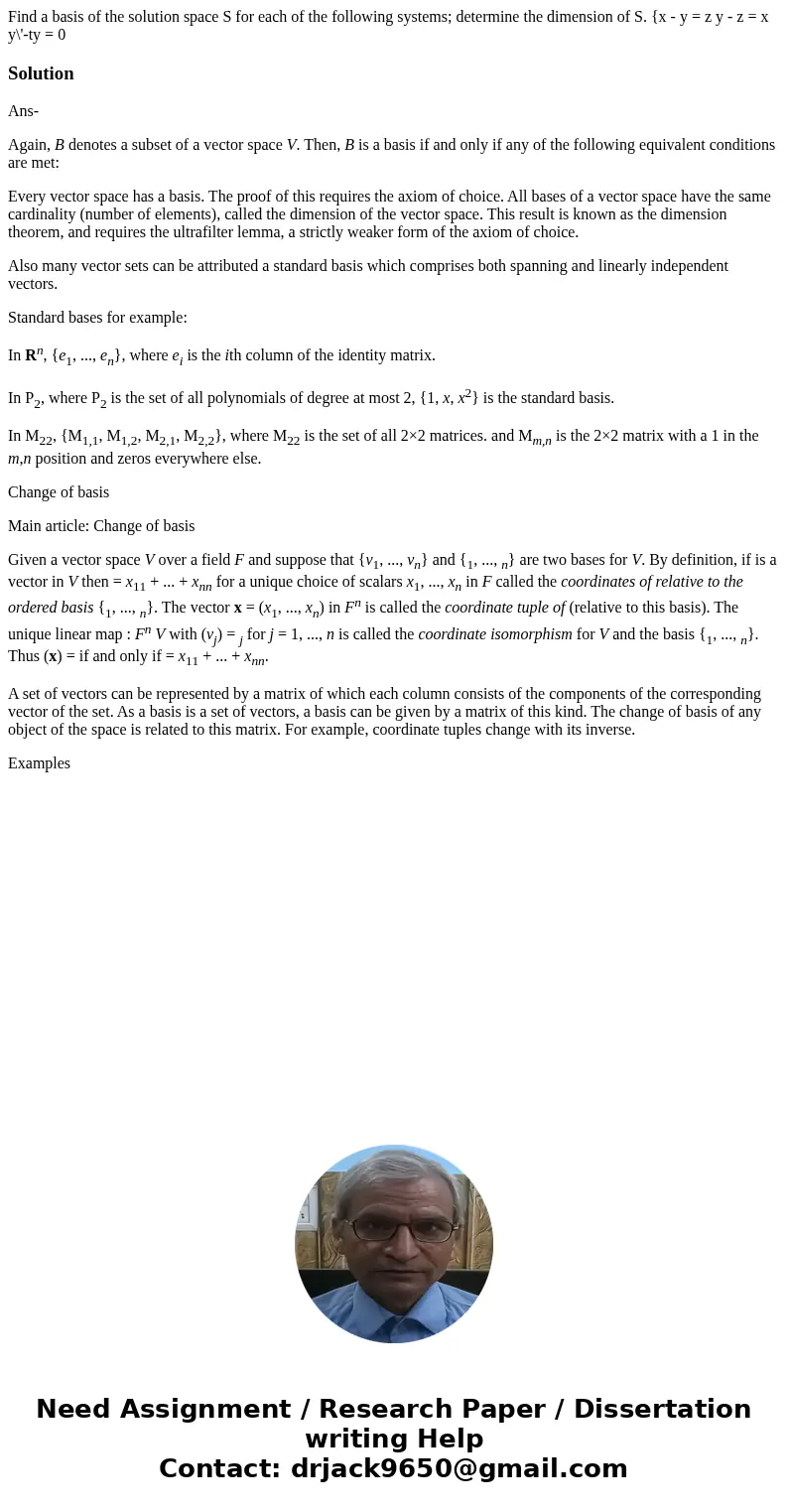Find a basis of the solution space S for each of the followi
Solution
Ans-
Again, B denotes a subset of a vector space V. Then, B is a basis if and only if any of the following equivalent conditions are met:
Every vector space has a basis. The proof of this requires the axiom of choice. All bases of a vector space have the same cardinality (number of elements), called the dimension of the vector space. This result is known as the dimension theorem, and requires the ultrafilter lemma, a strictly weaker form of the axiom of choice.
Also many vector sets can be attributed a standard basis which comprises both spanning and linearly independent vectors.
Standard bases for example:
In Rn, {e1, ..., en}, where ei is the ith column of the identity matrix.
In P2, where P2 is the set of all polynomials of degree at most 2, {1, x, x2} is the standard basis.
In M22, {M1,1, M1,2, M2,1, M2,2}, where M22 is the set of all 2×2 matrices. and Mm,n is the 2×2 matrix with a 1 in the m,n position and zeros everywhere else.
Change of basis
Main article: Change of basis
Given a vector space V over a field F and suppose that {v1, ..., vn} and {1, ..., n} are two bases for V. By definition, if is a vector in V then = x11 + ... + xnn for a unique choice of scalars x1, ..., xn in F called the coordinates of relative to the ordered basis {1, ..., n}. The vector x = (x1, ..., xn) in Fn is called the coordinate tuple of (relative to this basis). The unique linear map : Fn V with (vj) = j for j = 1, ..., n is called the coordinate isomorphism for V and the basis {1, ..., n}. Thus (x) = if and only if = x11 + ... + xnn.
A set of vectors can be represented by a matrix of which each column consists of the components of the corresponding vector of the set. As a basis is a set of vectors, a basis can be given by a matrix of this kind. The change of basis of any object of the space is related to this matrix. For example, coordinate tuples change with its inverse.
Examples

 Homework Sourse
Homework Sourse